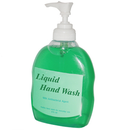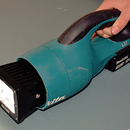Introduction: Wine Barrel Fruit Bowl
This is the fruit bowl I made from wine barrel planks, the red stain on the inside of the bowl is from the red wine that used to be inside the barrel.
Step 1: Stuff You Will Need
After making the wine barrel beer table, I spent I long time sitting and thinking on a pile of oak barrel planks which are curved and tapered, which make them difficult to work with.
you will need
1. belt sander, with 40, 80 and 120 grit belts
2. 40, 80 ,120, 240 grit sand paper
3. jigsaw with a new blade.
4. sash clamps
5. a large weight
6. good quality wood glue
7. plane
8. furniture oil
9. clean rags.
10. around 3 hours plus 24 hours for glue to dry
11. fruit
Step 2: Choosing the Planks
When I started playing around with the pieces I noticed that the red stain on the inside would not sand off, and a coat of furniture oil made the stain redder and gave the timber an unusual look.
I also noticed that I couldn't just grab just any planks an expect them to fit together, as shown in the photos there were very large gaps, between the pieces I wanted to use.
It was about now that I really wish that I paid a bit more attention to how the barrel came apart, well at lest numbered the planks before I cut them.
In the end I had to carefully look at the marks on the planks and put them back together the same way they came off the barrel
Step 3: Glueing the Planks
First I did a "dry run" to see every thing would fit together properly.
I used a couple of sash clamps, with some large containers of water on top to clamp the wood while the glue was drying.
I was thinking of using dowels to hold the planks in place but as everything is curved I could see than it would be very difficult to get every thing lined up so I made sure I used a high quality wood glue as the cheap stuff would probably let go if the bowl was dropped.
Once the weight was on the top it was easy to adjust the clamps, or give the planks a tap with a hammer to get everything in the right position.
Then I had to wait 24 hour for the glue to have full strength.
Step 4: Marking Out
When I got the barrel from the pub, I had been cut about 4 inches over half way, so this means my bowl would not be symmetrical, as the planks are tapered and the curve changes along the length of the plank.
If you want a perfectly symmetrical bowl it would have to be cut from the centre of the barrel.
As I don't have that option, I marked the centre of the bowl and then measured from the centre to the outer edge on the narrow end.
I then marked out that measurement on the wide end, I had to cut to tapered strips off the sides to make the bowl look right.
I also marked out some curves on the corners to get rid of the sharp ends.
Step 5: Cutting Out the Shape
When I made the beer table I made the mistake of using a cheap jigsaw blade, as oak is very hard it went blunt quickly and was very difficult to cut.
This time I used a high quality German blade, It was much easier to control and I got a much better finish.
I found to cut the curves it was best to cut the corners off at 45 degrees first and then have another go at it.
Because of the shape of the bowl is hard to clamp down I got an assistant to hang on to the other end when sawing and sanding.
Step 6: Stop the Wobble
I think the camera must of got dust on the lens as some of the photos are a bit fuzzy.
You would of probably guessed that I need to do something to the bottom to stop the bowl from wobbling, I have an electric plane so I flatten the bottom out. A hand plane would also do the same job.
Step 7: Filling Gaps
Despite my best efforts there was still some gaps that needed filling, to keep the bowl easy to clean. I also didn't like the Idea of fruit juice getting into a gaps and going off.
I just filled the gaps with glue, waited a couple minutes for the glue to get in and then sanded. The sanding dust gets in the glue and fills the gap.
Step 8: Sanding
I used a belt sander with a 40 grit belt to get the edges the right shape and smooth out all the bumps. The outside is pretty easy just keep the machine moving or you will end up with a flat spot.
The inside was painful as I has to use the roller on the belt sander and go across the grain, as the shape of the bowl would not allow the belt sander to be used flat.
I used three 40 grit belts to get it right as oak is hard and the inside had quite a few humps in it.
Step 9: More Sanding
I would have liked to of run a router around the edge of the bowl but no doubt the inner curve would have been a problem as routers can only be used on a flat surface, so I used the belt sander to round the edge off.
I then used 80 and 120 grit belts and hand sanded the bowl with 240 grit paper
Step 10: Finishing Off
After all that sanding it was good to get some oil furniture oil on the timber. The red wine stain make the timber look very unique and it seems to change colour in different light.
The bowl is also very tactile and everyone who sees it want to touch it.
Don't like fruit? you could put your keys, phone, glasses and wallet in there.













